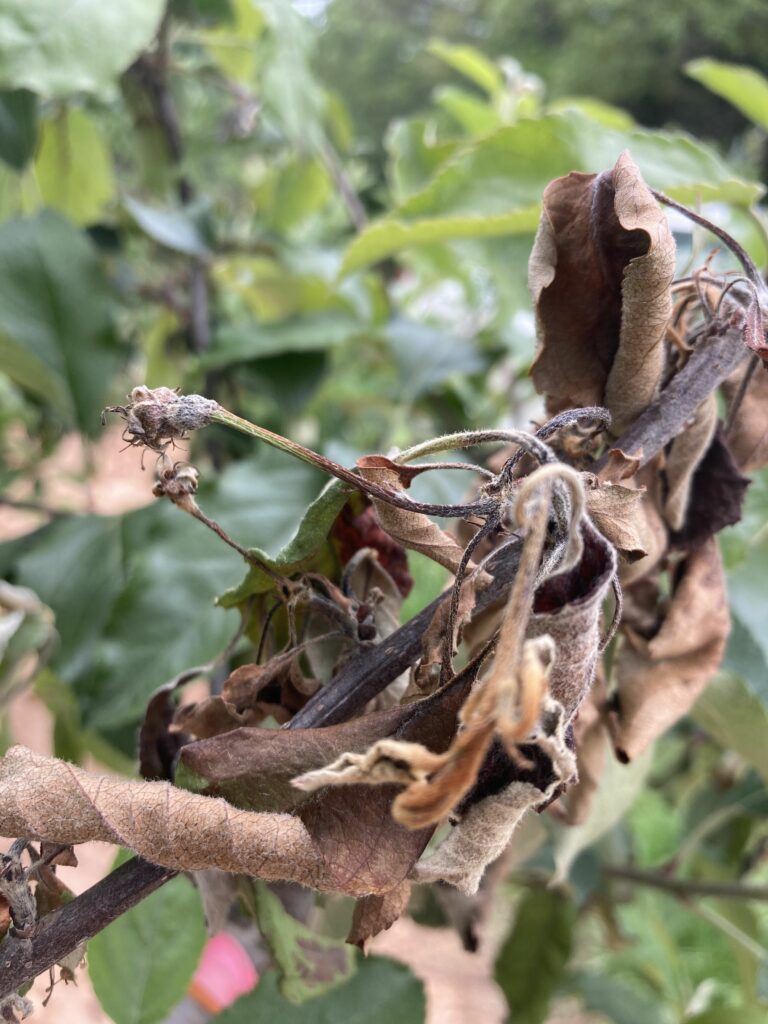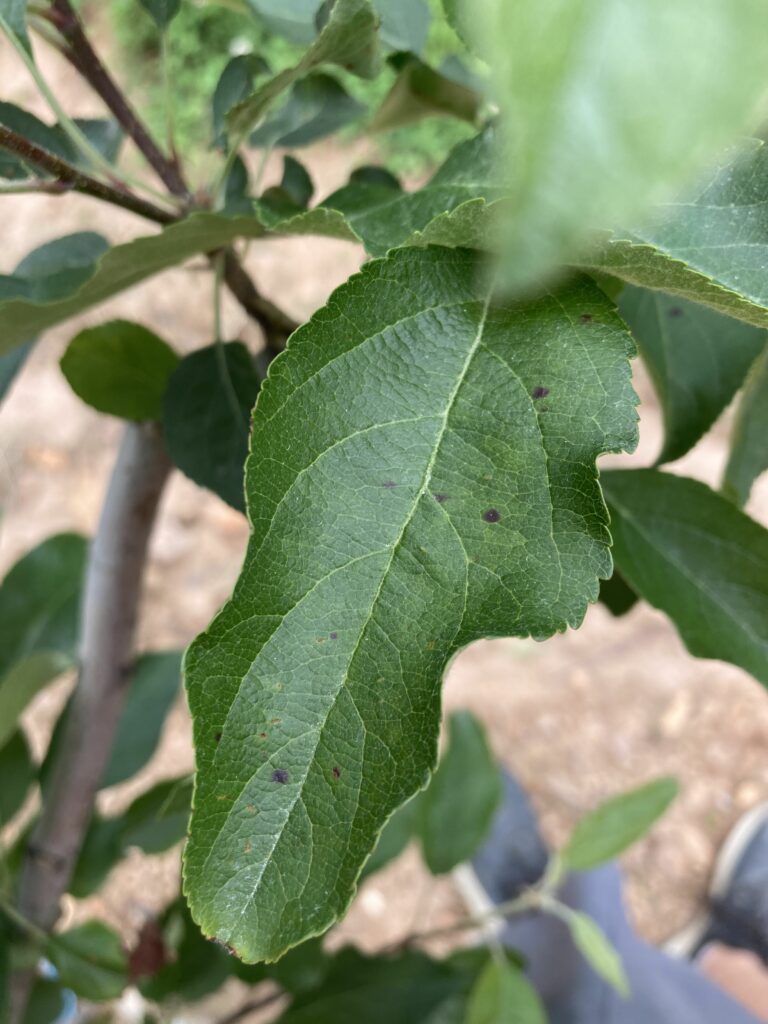Apple Disease Update: Week of May 17, 2021
go.ncsu.edu/readext?797824
en Español / em Português
El inglés es el idioma de control de esta página. En la medida en que haya algún conflicto entre la traducción al inglés y la traducción, el inglés prevalece.
Al hacer clic en el enlace de traducción se activa un servicio de traducción gratuito para convertir la página al español. Al igual que con cualquier traducción por Internet, la conversión no es sensible al contexto y puede que no traduzca el texto en su significado original. NC State Extension no garantiza la exactitud del texto traducido. Por favor, tenga en cuenta que algunas aplicaciones y/o servicios pueden no funcionar como se espera cuando se traducen.
Português
Inglês é o idioma de controle desta página. Na medida que haja algum conflito entre o texto original em Inglês e a tradução, o Inglês prevalece.
Ao clicar no link de tradução, um serviço gratuito de tradução será ativado para converter a página para o Português. Como em qualquer tradução pela internet, a conversão não é sensivel ao contexto e pode não ocorrer a tradução para o significado orginal. O serviço de Extensão da Carolina do Norte (NC State Extension) não garante a exatidão do texto traduzido. Por favor, observe que algumas funções ou serviços podem não funcionar como esperado após a tradução.
English
English is the controlling language of this page. To the extent there is any conflict between the English text and the translation, English controls.
Clicking on the translation link activates a free translation service to convert the page to Spanish. As with any Internet translation, the conversion is not context-sensitive and may not translate the text to its original meaning. NC State Extension does not guarantee the accuracy of the translated text. Please note that some applications and/or services may not function as expected when translated.
Collapse ▲A brief update for this week since hopefully most attended the Petal Fall Twilight Meeting last week in Henderson County. There are a few diseases to keep in the back of the brain as week-especially as temperatures are rising and falling only into the mid to upper 50s during the night hours. Although there is only a slight chance of rain in the forecast for Western NC over the next few days, leaf wetting hours can and will accumulate as a result of dew formation. Coupled with these warmer night temperatures, this can be a pathogen’s paradise.
The first disease I believe is worth highlighting is fire blight-both on the blossoms and shoots. Funny story-we conducted a blossom blight trial in a block of ‘Gala’ this season and went out to rate the trial this past week. Sure, this was a trial in which we evaluated biological products, but it was unusual that for nearly every treatment we were only seeing a 10% reduction in blossom blight incidence at best in the majority of the treatments. Usually this number is around 50%. We then realized, that our numbers were skewed because only blighted flowers were left on the tree as all of the non-infected clusters had fallen off due to the double freeze! I mention this because a few blossom infection can really start a local fire blight epidemic in your block and haunt you for years to come. Especially if you aren’t visiting/scouting these blocks as frequently because there is no crop in them! If you do find blossom infections, remove and destroy wood no less than 12 inches from the visible symptoms. I’d also suggest applying a 12 oz/100 gal rate of prohexadione-calcium (Kudos, Apogee) prior to and 10 to 14 days following infection removal.
Of course with the warming weather, my other concern is certainly Glomerella leaf spot and bitter rot. In many trees without a crop, foliage is looking quite dense, increasing the leaf drying times. In our block where we conducted fire blight trials this year I observed the other day what appeared to be early Glomerella leaf spot: Purple specks distributed throughout the upper leaf surface.
I went back out today and observed more advanced lesions:
This ‘Gala’ block has only had a few fungicide applications this season, but I’ll continue to stress that even if you do not have a crop, make sure to continue fungicide applications at slightly extended intervals throughout the spring and summer! You’ll thank yourself next year.
If this is your situation, from a disease management standpoint my suggestion would be to continue with a normal disease management program as you would in during any standard growing season. I realize that financially, if this a reduced crop, then perhaps including some of the more expensive chemicals such as Merivon or Inspire Super may not be feasible. You will likely able to get by with a protectant fungicide program of captan + mancozeb (stay within seasonal limits and PHI) on a seven to ten-day interval. Consider incorporating a DMI fungicide (Procure or Rally) or sulfur to help with mildew control over the next few weeks. Also, consider adding Topsin or a generic thiophanate methyl fungicide for flyspeck and sooty blotch management (every other spray).





